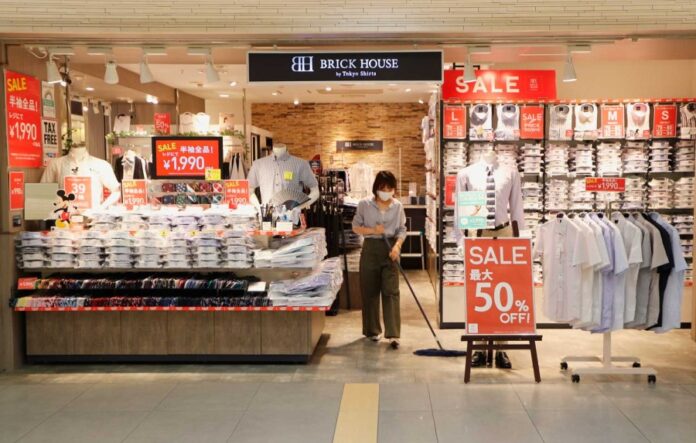By DPA
The Japanese economy contracted at an annualised rate of 27.8 per cent in the second quarter, as the world’s third-largest economy was devastated by the novel coronavirus pandemic, a government report showed on Monday.
The third straight quarterly contraction marked the biggest fall since 1980, when comparable data became available.
The reading was almost in line with the 26.6 per cent contraction forecast by the Japan Centre for Economic Research.
The centre expected the economy to bounce back in the July-to-September period with annualised growth of 13.6 per cent.
Consumer spending, a major component of output, dropped 8.2 per cent quarter on quarter in the April-to-June period for the third straight quarter of decline following a consumption tax increase in October, according to the report released by the Cabinet Office.
Corporate investment fell 1.5 per cent in the April-to-June quarter after a 1.7 per cent rise in the first quarter, the office said.
Exports of goods and services plunged 18.5 per cent and imports were down 0.5 per cent, the office added.
The Japanese economy shrank at an annualised rate of 2.5 per cent in the first quarter, officially entering a recession following a seven per cent contraction in the last quarter of 2019, when the economy took a big hit after the government raised the country’s consumption tax to 10 per cent on Oct. 1 from eight per cent.
In late March, the COVID-19 pandemic forced the International Olympic Committee and local organisers to delay the Tokyo Olympics by one year.
Some experts, however, warned the postponed Games might not be held next year, either, as the world is expected to continue struggling with the novel coronavirus.
The pandemic took a heavy toll on economic activity as the government declared a state of emergency for Tokyo and six other prefectures in early April.
The government urged residents to stay at home and issue business closure requests.
Nine days later, the measure expanded to the entire country.
The nationwide state of emergency had lasted a month until mid-May in most of the country’s 47 prefectures.
On May 25, the measure was lifted in Tokyo and four other prefectures, which were the last remaining regions subject to restrictions.
It was a “severe outcome as economic activity was halted in April and May’’ under the state of emergency, Economic Revitalisation Minister, Yasutoshi Nishimura, said, referring to the record contraction.
“The government will take all possible measures for economic and fiscal management so that the economy would be put on a recovery track, led by domestic demand,’’ Nishimura said.
However, the minister expressed reservations for a reduction in consumption tax.
Analysts do not expect the economy to make a V-shaped recovery due to sluggish consumer spending and a resurgence of the coronavirus since July.
Japan reported 1,019 new infections on Sunday, exceeding 1,000 new daily cases for the fourth day in a row.
Prime Minister Shinzo Abe has seen his popularity fall over handling the health crisis.
Abe’s government launched a controversial travel promotion campaign in late July to reboot the tourism industry and local economies hit hard by the pandemic, while the country had continued to see the number of new infections rise.
Tokyo was excluded from the campaign following a rapid rise in case numbers there.
In order to help mitigate the fallout from the pandemic, Japan’s parliament enacted a record 31.9-trillion-yen ($299 billion) supplementary budget in June.
The move came six weeks after the approval of a 25.69-trillion-yen first extra budget, in which the government provided 100,000 yen to all residents in the country.




